Wentworth Woodhouse: 'The UK's biggest restoration project'
- Published
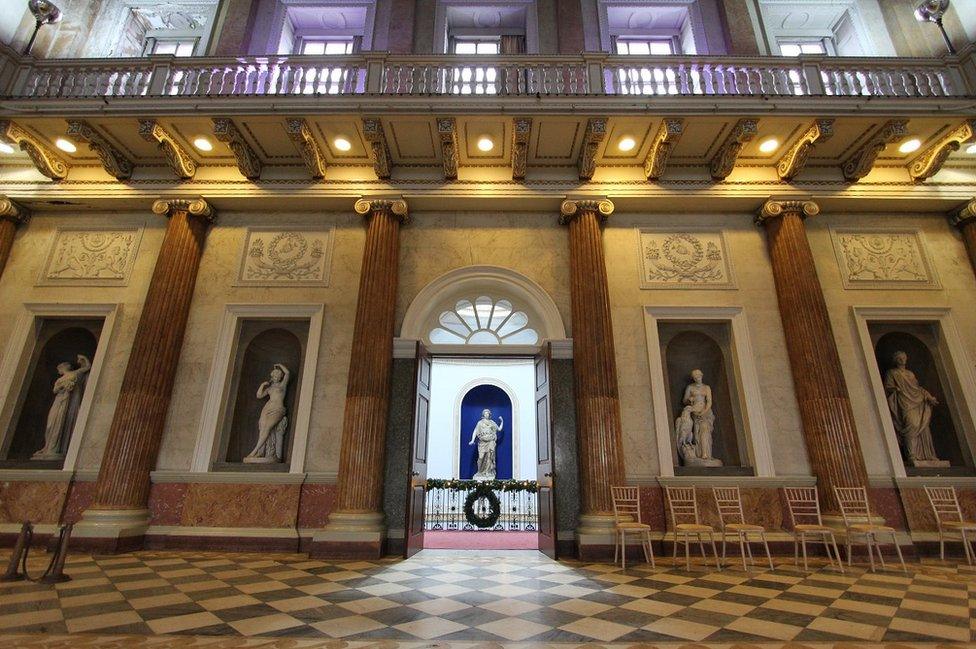
Wentworth Woodhouse includes 22 listed buildings or structures
The numbers involved in the renovation of what is thought to be the UK's biggest stately home are staggering.
After it was sold for £7m in 2017, many of Wentworth Woodhouse's 365 rooms across 83 acres of South Yorkshire were found in a vastly decayed state.
Stable blocks were full of asbestos, huge sections of roofing collapsed, carpets were left ruined by water damage and 18th Century silk wallpaper was peeling from its grand bedrooms.
Boosted by a £7.6m grant from the government in 2016 - pennies compared to the expected final bill of well over £100m - the Wentworth Woodhouse Preservation Trust (WWPT) got to work.
Builders and volunteers removed 350 tonnes of rubbish and 100 structural surveys were carried out, with organisers admitting the scale of the task in hand remains difficult to comprehend.
The WWPT says the only two projects that can compare with their goal to turn it into a multi-purpose site are the renovation of the House of Commons and Buckingham Palace's £369m refurbishment.
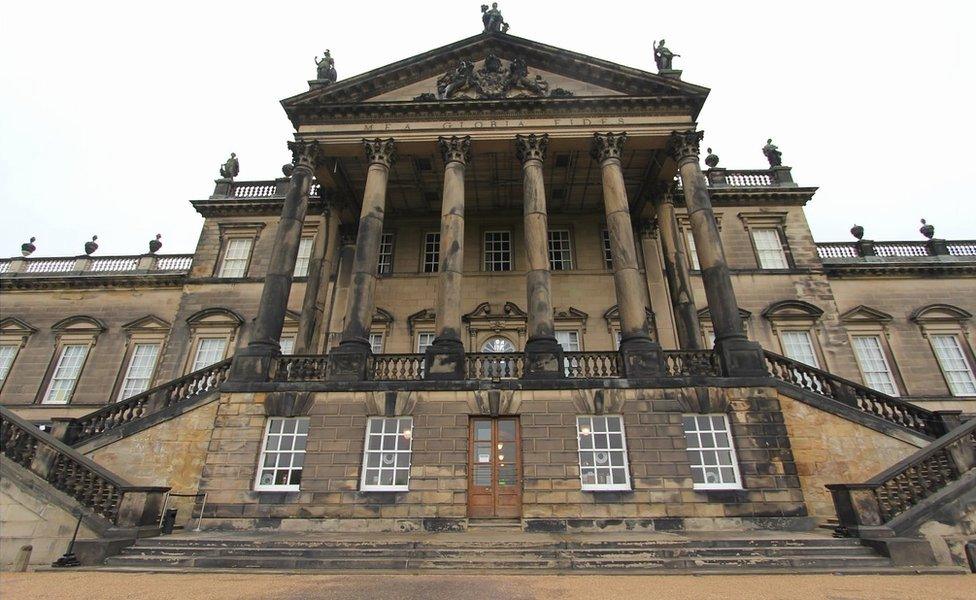
The stately home in Rotherham has a 185m (606ft) facade
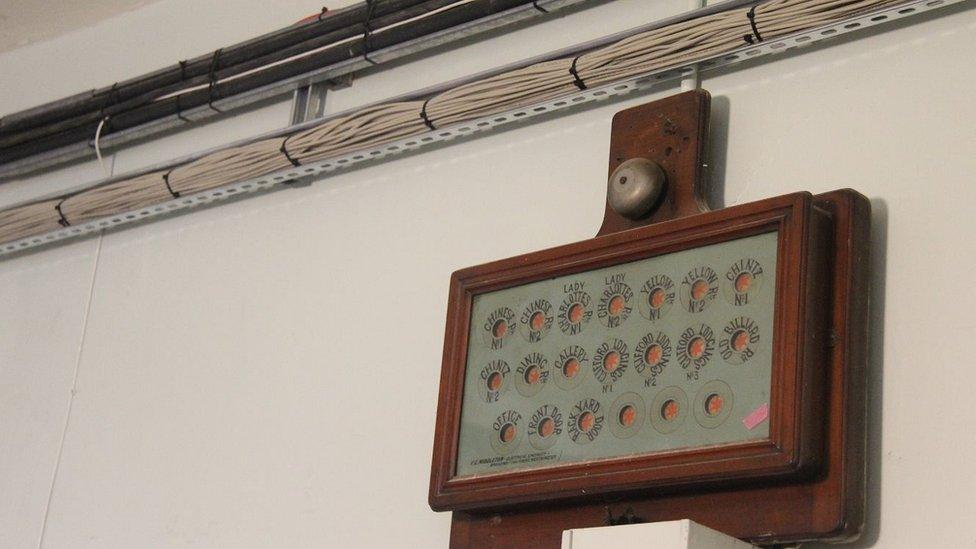
The bell system for servants is still on display, with superfast broadband cables installed above
"Buckingham Palace is half the size of this and in far better condition, so you can see the scale of what we're trying to do," the trust's chair Julie Kenny says.
"It's had decades of disrepair and neglect, and once you have a leaking roof it quickly spreads to other things.
"The most important thing at the moment is to stop the leaks, then deal with the dry rot beneath it."
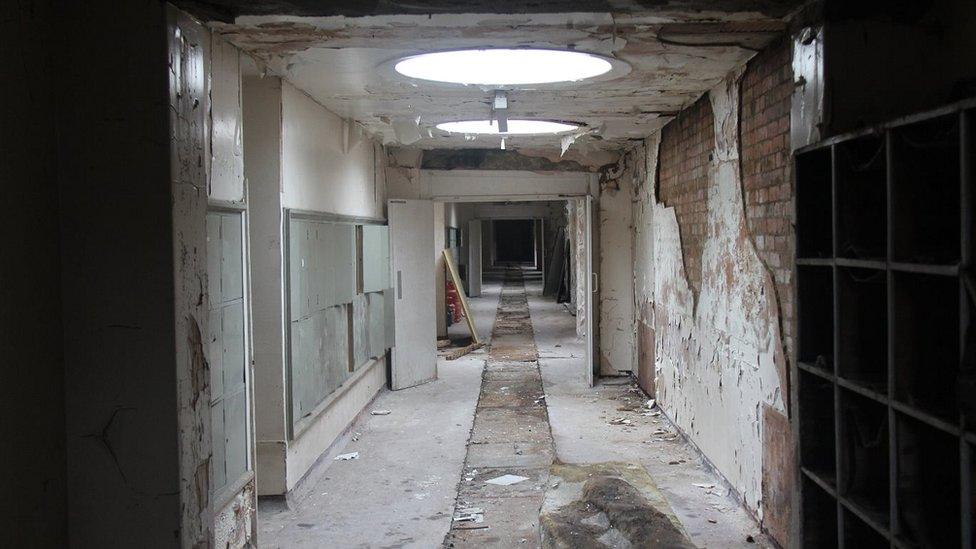
The stable area was turned into a school, but is now in serious disrepair

Bedrooms feature damaged 18th Century silk wallpaper

A brief history of Wentworth Woodhouse
The house is split into three - an original Jacobean structure, a Palladian east-facing section and a Baroque west-facing section
The original building was once the home of Thomas Wentworth, the 1st Earl of Strafford, who was executed at Tower Hill on the order Charles I in 1641
As the house grew in importance and welcomed royalty and the political elite, the 4th Earl Fitzwilliam altered the two wings by adding a third floor in 1782
After World War Two, Lady Mabel Fitzwilliam brokered a deal to lease most of the house to the Lady Mabel College of Physical Education
Coal helped to make the Fitzwilliams one of the richest families in the country, but fortunes turned when the industry was nationalised in 1947
The house was put on the market in 1989 and bought by Mr Wensley Haydon-Baillie. Ten years later, the Newbold family bought it and started a restoration programme
After Clifford Newbold's death, the house was put on the market and bought by the Wentworth Woodhouse Preservation Trust for £7m in 2017

Along the labyrinth of corridors and stairwells, builders construct scaffolding to tackle the latest roof leak, while volunteers put up Christmas wreaths ready for festive fundraising events.
The old stables and riding school, built in 1768 and once home to 84 racehorses, has now been turned into an impromptu wood and brick store.
Outside, tonnes of green Westmorland slate from the Lake District sit waiting to be added to the roof, matching the original tiles.

Dry rot has been a major problem for builders due to serious leaks in the roof
Having started with a single phone line, a patchy internet connection and a single vacuum cleaner, the WWPT now boasts 19 full-time staff and a team of 120 volunteers, almost entirely from the Rotherham area.
Mrs Kenny says: "Rotherham's had a bit of a tricky time in the last few years in terms of negative news coverage - the people of Rotherham are good people and I see this as a catalyst for change."
Pupils from the town's schools have been invited to see how work is getting on, with one group helping to spruce up the Rose Garden area.
"We held a barbecue to say thank you to them," Mrs Kenny adds.

Schoolchildren helped to improve the Rose Garden, although a statue still stands without a head
The long-term aim is to turn Wentworth Woodhouse into a visitor attraction, office and craft space, event venue and hotel.
Today, the home is busy with pre-booked tours exploring the buildings and 83 acres of land, with a cafe and gift shop also helping to boost much-needed funds.
Areas of the house are rented as wedding venues, with film crews also making the most of its endless opportunities for sets.
Wentworth Woodhouse was used for ITV's Victoria period drama, with a section of the stable block doubling as Downing Street.
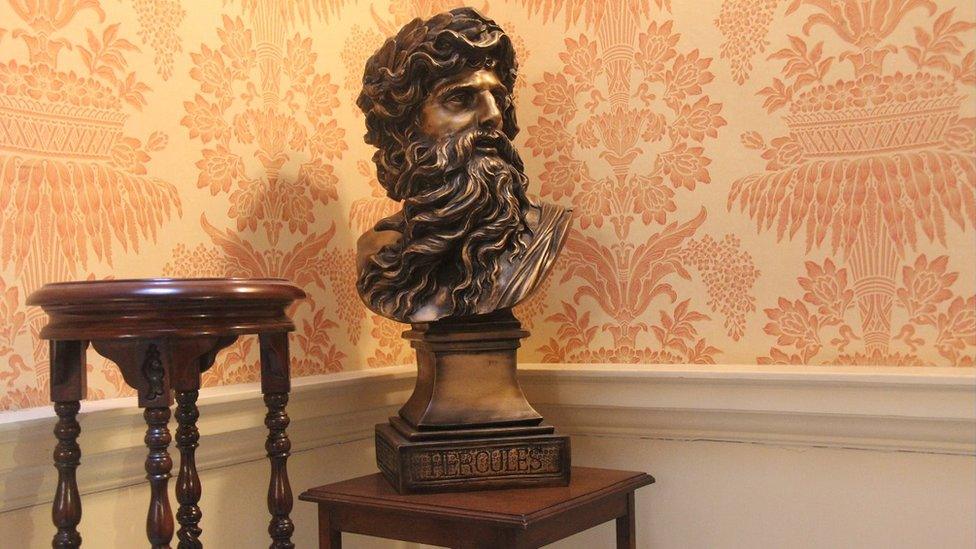
WWPT, established in 2014, has 19 staff and 120 volunteers
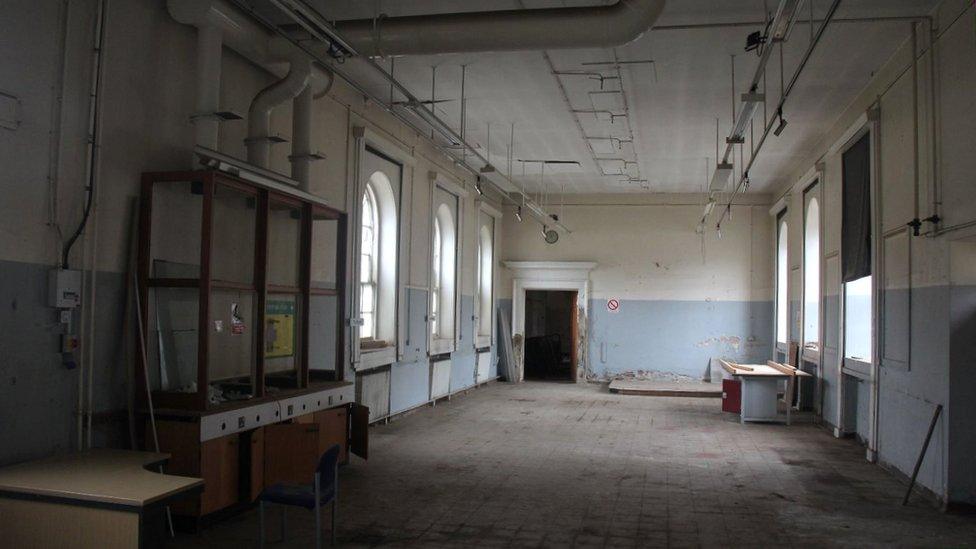
A former school chemistry laboratory still has cupboards labelled "Bunsen burners"
Two lifts will be installed to take visitors up to the roof, allowing a glimpse of the vast repair work, and state bedrooms once reserved for the rich will be rentable for the night.
These tactics alone will not be enough to reach its required final bill, with WWPT seeking further grants and looking for private funders.
It predicts it will take 15 years simply to "break the back" of the work, with many of those involved admitting it is unlikely they will see the finished product.
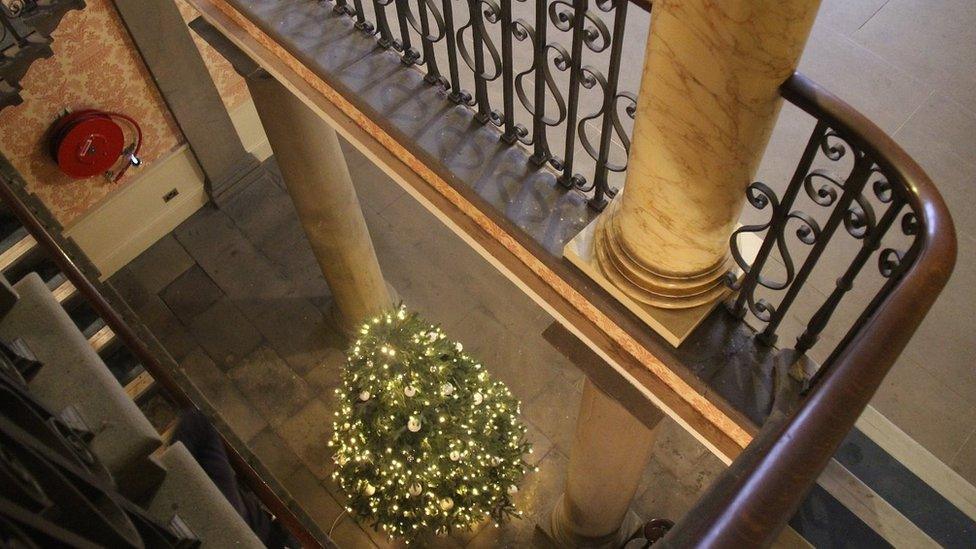
Christmas decorations have already been installed ahead of a busy festive schedule of events

The National Trust has helped to organise pre-booked tours of the house
Gillian Clarke, 63, used to live in a neighbouring village and jumped at the chance to become a volunteer.
She says: "It's so beautiful, even with most of the rooms lacking any furniture - it's the floors, fireplaces, ceilings, the symmetry, all the craftsmanship involved."
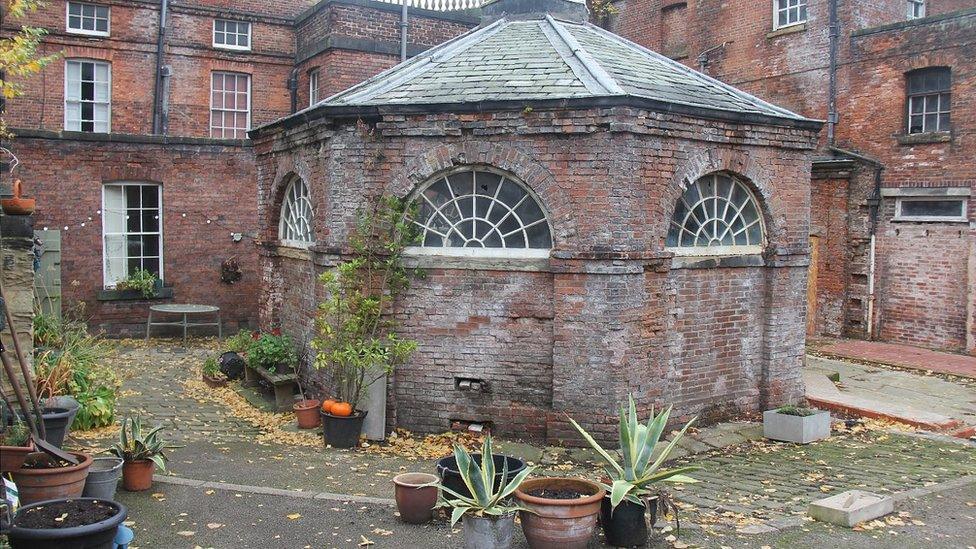
The old game larder will be turned into an "exclusive eating area", according to the WWPT
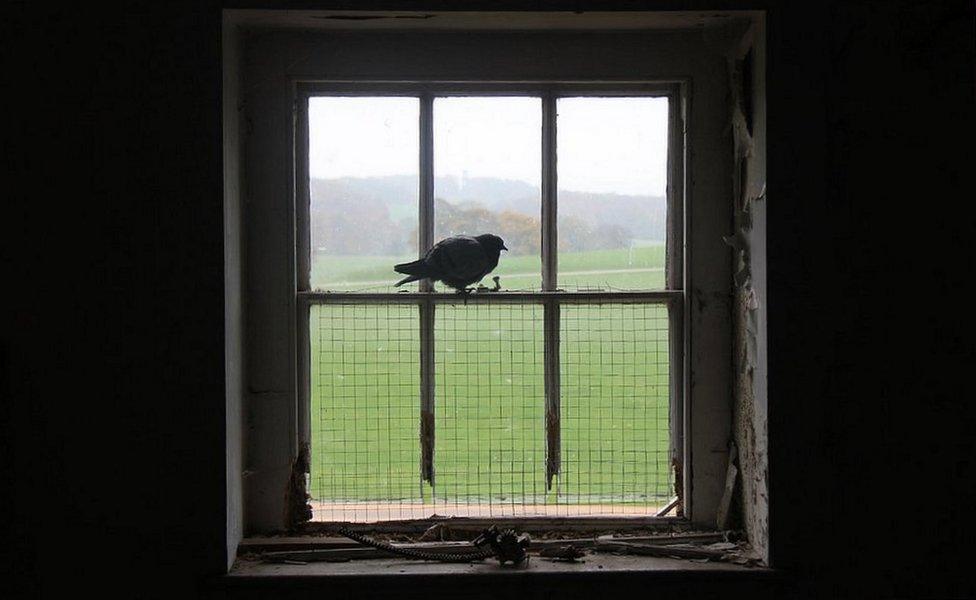
The repairs are likely to take around three decades to complete
Liz Davies, 56, who works in Wakefield Council's pensions department, also volunteers at the stately home.
"It's completely different to my day job, there's such a variety of tasks to volunteer for and a chance to meet loads of different people from different walks of life," she says.
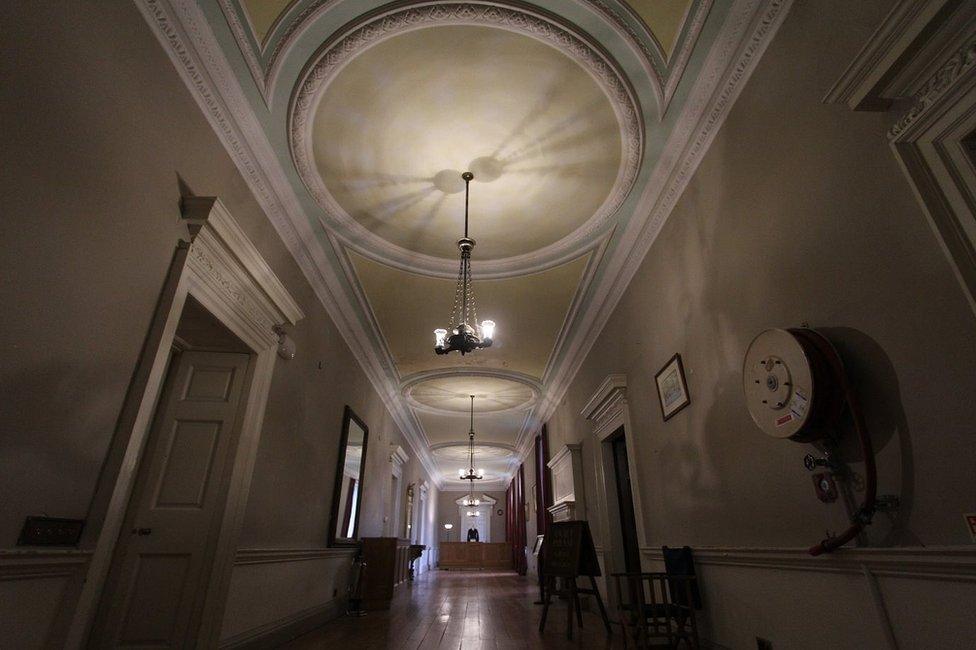
The house has 365 rooms covering 250,000 sq ft
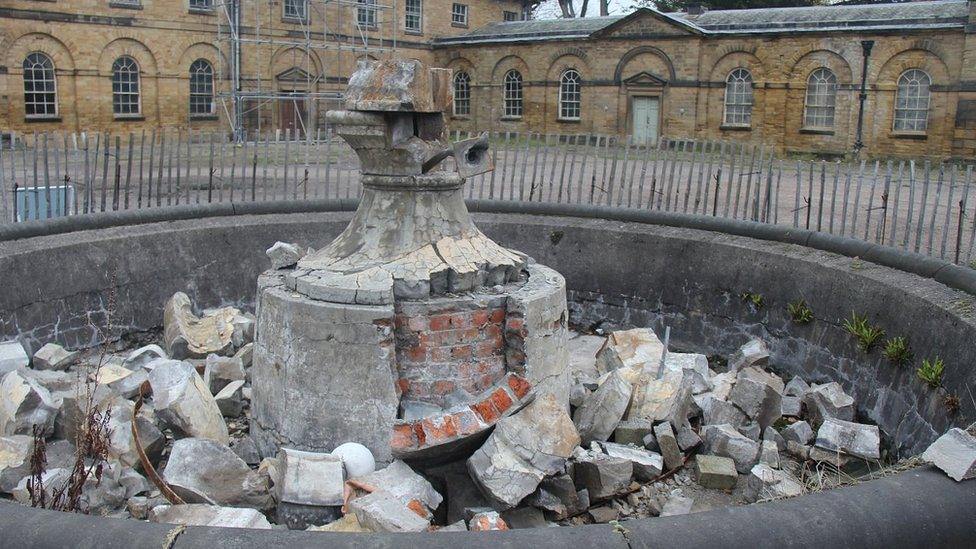
An ornamental urn in the stables area collapsed in the last month
With hundreds of years of history, those involved in the work feel Wentworth Woodhouse has been given a lifeline after it teetered on the edge of dereliction.
Only time will tell if it indeed manages to realise its dream scenario.

You may also like:

Mrs Clarke adds: "I'm not sure if I will see it finished as it's going to take many years and lots of money.
"I'm going to buy a roof tile for my grandchildren so their names will be on the roof for hundreds of years to come."
Photos by Tom Airey
- Published26 March 2018
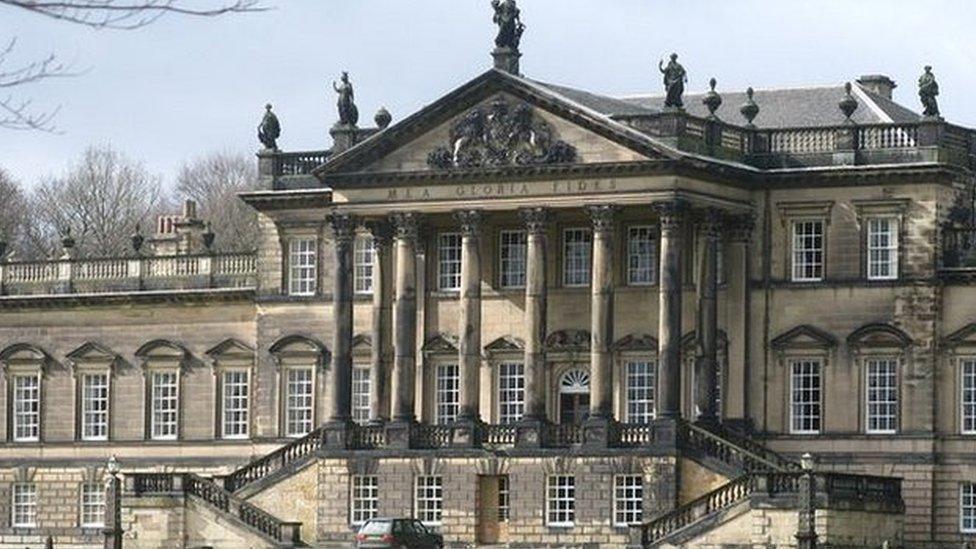
- Published27 March 2017
